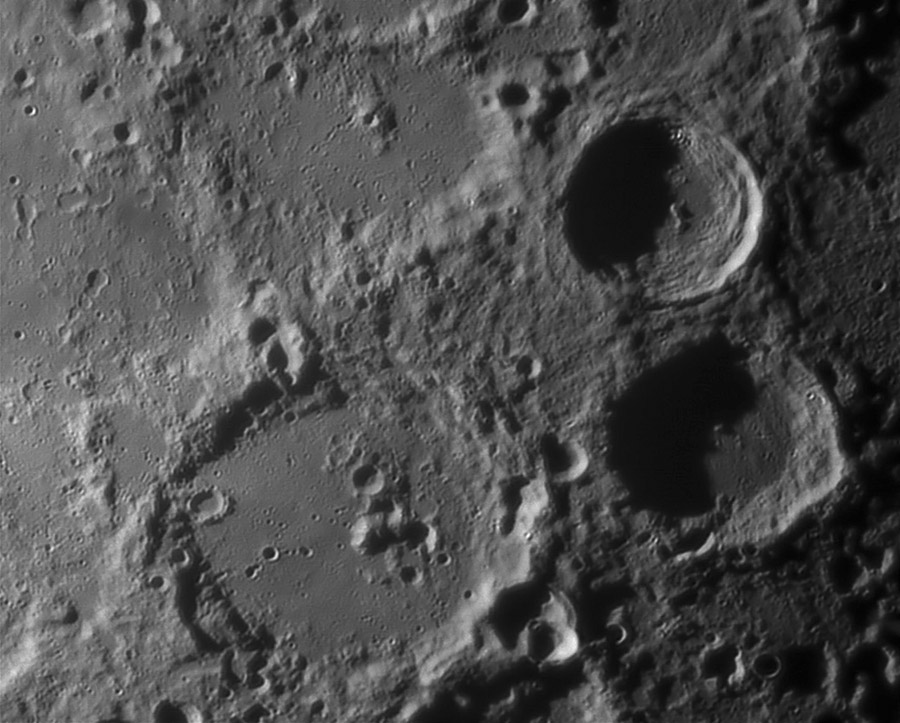February 12, 2018
Which Crater is That?
Originally published September 2, 2008

image by Pavel Presnyakov
Tycho (upper right) looks oddly out of place in Pavel's excellent new image. Oh wait, its not Tycho, but the smaller look-alike Werner, hundreds of kilometers northeast of Tycho. Its only their surroundings that make it possible to identify some craters. When craters are initially formed they look pretty much like other craters of similar diameter. All fresh craters smaller than about 10 km in diameter are nearly identical little bowls. Larger craters up to about 35 km in diameter are generally similar to each other, but different amounts of slumping give them some individuality. At larger diameters, all the crater walls collapse into terraces making Copernicus, for example, look pretty much like Hausen. If all the Moon's craters were young and little modified it would be much harder to identify features. It is older, modified craters such as Regiomontanus and Walther (middle top and bottom) that have distinctive character. But it would be difficult to identify many lunar craters if they were cut out of their surroundings - its the neighborhood that makes different features on the Moon easily recognizable.
Chuck Wood
Technical Details
22.08.2008 23:54 UT. TAL-250K + barlow 3x + Vac-135, b/w 1280x1024 + Baader IR-pass filter. 100 km from Kiev, Ukraine
Related Links
Rükl plate 55
Pavel's gallery
PUBLIC SERVICE ANNOUNCEMENT
I just discovered that Hamilton Books seems to have many astronomy books from Cambridge University Press and other publishers on sale, most for less than $10 each, including The New Atlas of the Moon (English edition, $20) and Peter Grego's two Moon guides ($10 & $4). I just ordered 14 books for a total of $97! Unfortunately, the company only ships to US addresses.
Yesterday's LPOD: Light & Dark Musings
Tomorrow's LPOD: Lines of Little Holes
COMMENTS?
Register, Log in, and join in the comments.



